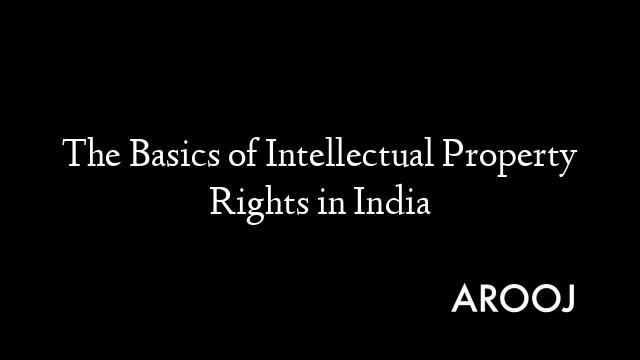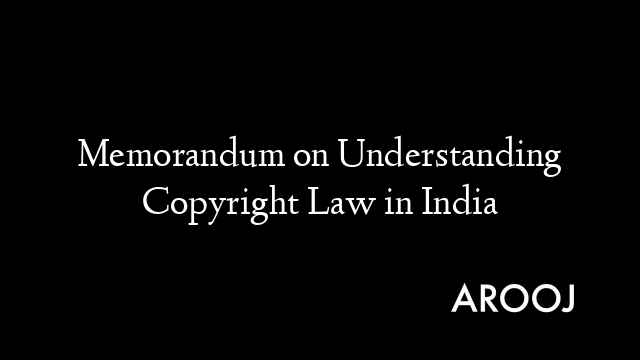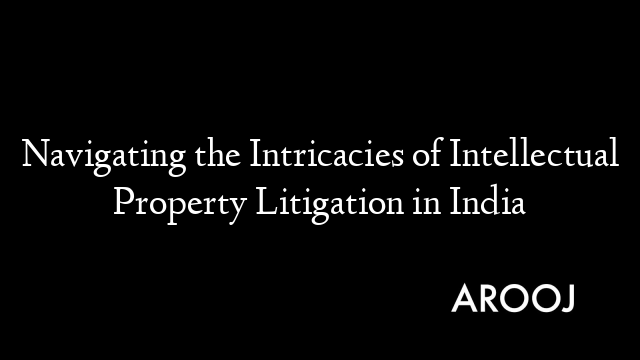Contents
Introduction
Purpose and Scope
This memorandum aims to provide a comprehensive analysis of intellectual property (IP) laws with a focus on India’s legal framework in comparison with those of other countries. Intellectual property, encompassing patents, copyrights, trademarks, industrial designs, and geographical indications, among others, serves as the cornerstone for innovation, creativity, and economic growth globally. Given the rapid advancements in technology and the increasing importance of knowledge-based economies, understanding the nuances of IP laws has never been more critical.
The objectives of this memorandum are twofold. Firstly, it seeks to demystify the complex landscape of IP laws in India, detailing the mechanisms, protections, and challenges inherent within. Secondly, it endeavors to place Indian IP laws in a global context by comparing and contrasting them with the frameworks of other jurisdictions. This comparative analysis will cover several dimensions, including legal structures, enforcement mechanisms, compliance with international treaties, and the socio-economic impacts of these laws.
Understanding IP laws in a global context is vital for several reasons. It facilitates cross-border trade, investment, and collaboration, laying the groundwork for international partnerships and innovation. Moreover, in an era where intellectual property rights (IPRs) have become central to trade disputes and negotiations, a nuanced understanding of global IP laws can empower policymakers, businesses, and legal professionals to navigate these complexities effectively.
Overview of Intellectual Property (IP)
Intellectual property refers to creations of the mind: inventions; literary and artistic works; designs; and symbols, names, and images used in commerce. It is protected by law through patents, copyrights, trademarks, and the like, enabling creators to earn recognition or financial benefits from their inventions or creations. The global economy, increasingly driven by knowledge and innovation, places immense value on IP as a key asset in fostering economic growth, competitiveness, and employment.
The history and evolution of IP laws can be traced back several centuries, with the earliest known patent law issued in Venice in 1474. This legal framework, aimed at encouraging innovation while providing economic incentives to inventors, laid the foundation for modern IP law. Over the centuries, as societies evolved and economies became more complex, so too did the concept of intellectual property. The establishment of the World Intellectual Property Organization (WIPO) in 1967 marked a significant milestone in the global governance of IP rights, facilitating cooperation and setting international standards.
Rationale for Comparing Indian IP Laws with Other Countries
India, with its rich history of innovation and cultural creation, plays a pivotal role in the global IP landscape. As one of the world’s largest economies, its approach to intellectual property rights is of keen interest to both developed and developing nations. Comparing Indian IP laws with those of other countries can unveil insights into diverse legal traditions and strategies for balancing the interests of creators with those of the public.
The benefits of such a comparative analysis are manifold. For policymakers, it provides a framework for evaluating and refining domestic IP laws in alignment with international best practices, fostering an environment conducive to innovation and creativity. Businesses stand to gain from a deeper understanding of the IP regimes in their domestic and target markets, enabling them to navigate the complexities of IP protection and enforcement strategically. Legal professionals, on the other hand, can enhance their advisory capabilities, offering more nuanced counsel to clients navigating the global IP landscape.
By examining the intricacies of Indian IP laws in comparison with those of other nations, this memorandum seeks to contribute to the global discourse on intellectual property rights. It aims to elucidate the challenges and opportunities inherent in the current IP regime, providing valuable insights for all stakeholders engaged in the creation, protection, and management of intellectual property.
Part I: Understanding Intellectual Property Laws in India
Historical Evolution of IP Laws in India
The legal framework for intellectual property (IP) in India has evolved significantly over centuries, influenced by a rich tapestry of indigenous traditions, colonial legacies, and post-independence reforms aimed at aligning with global standards while catering to domestic needs.
Pre-colonial and Colonial Influences
Before the advent of colonial rule, India had a flourishing tradition of innovation and creativity, with informal systems for protecting knowledge and expressions. The colonial period introduced formal IP regimes to India, largely mirroring the British legal system. The first legislative act concerning IP in India was the British Patent Act of 1856, extended to India and establishing the foundation for patent law in the country. Subsequent laws on trademarks and copyrights were enacted, following the British models, to regulate and protect these rights within the colonial economy.
Post-independence Developments and Reforms
Following independence in 1947, India undertook a comprehensive review of its inherited legal frameworks, including IP laws, to adapt them to the newly sovereign nation’s goals of economic development and social welfare. The Indian Patents Act of 1970 marked a significant shift from the colonial patent system, introducing process patents for drugs and chemicals and emphasizing technology transfer and domestic innovation. Copyrights, trademarks, and other IP rights also underwent substantial reforms to balance creators’ rights with public interest.
Current Framework of IP Laws in India
Patents: Laws, Processes, and Key Cases
The Patents Act of 1970, with subsequent amendments, notably in 2005 to comply with the TRIPS agreement, currently governs patents in India. The act provides for product and process patents in all fields of technology, with a term of 20 years. The Indian Patent Office follows a rigorous examination process for patent applications, including publication, objections, and hearings. Landmark cases, such as the Novartis case concerning the patentability of the cancer drug Glivec, have shaped the interpretation and application of patent laws in India.
Copyrights: Laws, Processes, and Key Cases
The Copyright Act of 1957, amended over time, protects literary, dramatic, musical, and artistic works, and sound recordings and cinematograph films. The act provides rights for reproduction, communication to the public, adaptation, and translation, subject to certain exceptions for fair use. Significant cases, such as the Supreme Court’s judgment in the case of Eastern Book Company vs. D.B. Modak, have clarified the scope of copyright protection, especially concerning the copyrightability of databases.
Trademarks: Laws, Processes, and Key Cases
The Trade Marks Act of 1999 governs the protection of trademarks in India, offering registration and legal protection for distinctive marks that distinguish goods or services. The act provides for the registration, protection, and enforcement of trademark rights, with provisions for civil and criminal remedies against infringement. Landmark judgments, such as the case of Nandhini Deluxe vs. Karnataka Co-operative Milk Producers Federation Ltd., have elucidated principles surrounding trademark protection and infringement.
Industrial Designs: Laws, Processes, and Key Cases
The Designs Act of 2000 protects the visual design of products, defining a design as the features of shape, configuration, pattern, ornamentation, or composition of lines or colors applied to any article. The act aims to protect original or new designs that are appealing to the eye and do not include any mode of construction or anything that is purely functional. Key cases in the realm of industrial designs have revolved around the infringement of design rights and the criteria for originality.
Geographical Indications: Laws, Processes, and Key Cases
The Geographical Indications of Goods (Registration and Protection) Act of 1999 provides for the registration and better protection of geographical indications relating to goods. It aims to prevent the use of misleading geographical indications by others not originating from the place indicated, thereby protecting the interests of producers and consumers. Famous cases include the protection of Darjeeling tea, which became the first GI tagged product in India.
Protection of Plant Varieties and Farmers’ Rights: Specific Provisions and Cases
The Protection of Plant Varieties and Farmers’ Rights Act of 2001 is a unique piece of legislation in India that recognizes the contributions of both breeders and farmers in conserving, improving, and making available plant genetic resources. It provides for the establishment of an effective system for the protection of plant varieties and the rights of farmers and breeders. This act represents India’s commitment to recognizing and rewarding the multifaceted contributions to agriculture and biodiversity.
India’s Compliance with International IP Agreements
World Trade Organization (WTO) and the Agreement on Trade-Related Aspects of Intellectual Property Rights (TRIPS)
India is a signatory to the TRIPS Agreement, which came into effect in 1995 as part of the establishment of the WTO. The TRIPS Agreement sets minimum standards for the protection and enforcement of various forms of intellectual property rights, which member countries must comply with. India’s amendments to its IP laws, particularly in 2005, were largely aimed at fulfilling its obligations under TRIPS, balancing the need to integrate with the global economy with the imperatives of domestic development and public health.
Other International Treaties and Agreements
In addition to the TRIPS Agreement, India is a party to several other international treaties and agreements aimed at protecting intellectual property rights, including the Paris Convention for the Protection of Industrial Property, the Berne Convention for the Protection of Literary and Artistic Works, and the Budapest Treaty on the International Recognition of the Deposit of Microorganisms for the Purposes of Patent Procedure. Participation in these treaties reflects India’s commitment to the global intellectual property system while advocating for the flexibility to address its developmental needs.
Part II: Comparative Analysis with Other Countries
Comparative Framework
Selection Criteria for Countries
The selection of countries for this comparative analysis of IP laws is based on several criteria designed to ensure a comprehensive and diverse examination. These criteria include:
- Economic Diversity: Including countries from different economic backgrounds—developed, emerging, and developing economies—to understand how economic status influences IP law formulation and enforcement.
- Geographical Representation: Ensuring representation from various geographical regions to capture the global diversity in IP legal frameworks.
- Innovation Index: Considering countries with high rankings in global innovation indices to explore how IP laws support innovation.
- Legal Traditions: Including countries with different legal traditions (common law, civil law, etc.) to assess how these traditions shape IP protection and enforcement.
Overview of Comparative Legal Analysis Methodology
The methodology for this comparative legal analysis involves several steps:
- Literature Review: Gathering and reviewing existing literature on the IP laws of the selected countries, including legal texts, scholarly articles, and case law.
- Legal Framework Analysis: Examining the legal framework governing IP in each country, focusing on statutes, regulations, and guidelines.
- Case Law Review: Analyzing landmark and recent case law to understand how IP laws are interpreted and applied in practice.
- Qualitative Comparison: Conducting a qualitative analysis to compare and contrast the IP laws of India with those of the selected countries across various IP rights categories.
- Impact Assessment: Evaluating the socio-economic impact of the IP laws in each country, considering innovation, economic growth, and public welfare.
Country Profiles
This section provides an overview of the IP laws and their historical evolution in selected countries, followed by a detailed comparison with Indian IP laws across different IP categories and case studies highlighting unique aspects or significant legal battles.
United States
Overview and Historical Evolution: The U.S. has a well-established IP legal framework, with its roots in the Constitution. It has evolved to become one of the most comprehensive and stringent IP systems globally, emphasizing strong protection and enforcement mechanisms to encourage innovation and creativity.
Comparison with Indian IP Laws: The U.S. and India share similarities in the structure of IP protection; however, the U.S. generally provides stronger enforcement mechanisms and broader protection in areas such as patents and copyrights. Notable differences include the approach to software patents and the duration of copyright protection.
Case Studies: The Apple Inc. vs. Samsung Electronics Co. case on patent infringement highlights the U.S. legal system’s approach to protecting technological innovation.
European Union (EU) Countries
Overview and Historical Evolution: The EU has harmonized IP laws across member states through directives and regulations, aiming for a unified market. The European Patent Convention and the Copyright Directive are key components of this harmonized system.
Comparison with Indian IP Laws: The EU’s harmonized approach contrasts with India’s country-specific legislation. The EU’s focus on balancing innovation with user rights, especially in copyright law, offers an interesting comparison with India’s evolving framework.
Case Studies: The CJEU’s decision in the case of Infopaq International A/S v. Danske Dagblades Forening, which clarified the concept of copyrightable work, illustrates the EU’s nuanced approach to copyright law.
China
Overview and Historical Evolution: China has rapidly developed its IP laws in response to its integration into the global economy and WTO membership. Its legal framework now includes comprehensive protections for all major IP rights.
Comparison with Indian IP Laws: While both countries have made significant reforms to comply with TRIPS, China’s approach to IP enforcement, particularly against infringement and counterfeiting, is more aggressive than India’s.
Case Studies: The Huawei vs. ZTE case on standard-essential patents underscores China’s evolving jurisprudence in patent law and its efforts to balance innovation and competition.
Japan
Overview and Historical Evolution: Japan’s IP system is one of the most advanced in Asia, with a history of prioritizing IP protection to foster innovation and economic growth.
Comparison with Indian IP Laws: Japan’s efficient patent and trademark registration processes and its strong emphasis on IP rights enforcement present a contrast to the more bureaucratic and slower processes in India.
Case Studies: The Shiseido Co. Ltd. vs. JHS Svendgaard Laboratories Ltd. case regarding trademark infringement highlights the effectiveness of Japan’s IP enforcement mechanisms.
Brazil
Overview and Historical Evolution: As an emerging economy, Brazil has been updating its IP laws to stimulate domestic innovation and attract foreign investment, with significant reforms in recent years.
Comparison with Indian IP Laws: Brazil’s balanced approach to IP protection, focusing on both innovation and public health, shares similarities with India, especially in the context of pharmaceutical patents.
Case Studies: The Instituto Nacional da Propriedade Industrial (INPI) vs. Gilead Sciences case on the patentability of pharmaceutical products reflects Brazil’s nuanced approach to patent protection.
Regional and International Agreements Impacting IP Laws
Beyond the TRIPS Agreement, several regional and international agreements significantly impact IP laws and their enforcement across countries. These include the Paris Convention for the Protection of Industrial Property, the Berne Convention for the Protection of Literary and Artistic Works, and the Patent Cooperation Treaty (PCT), among others. These treaties facilitate international cooperation and harmonization of IP laws, offering a framework for protecting IP rights across borders.
Regional agreements, such as the European Union Intellectual Property Office (EUIPO) and the African Regional Intellectual Property Organization (ARIPO), further illustrate the efforts toward harmonization and enhanced cooperation in IP matters within specific regions. The implications of these agreements on national IP laws vary, with some countries adopting reforms to align with international standards, while others negotiate provisions to retain flexibility in addressing domestic needs.
Part III: Impacts and Implications
Economic and Social Impacts of IP Laws
Intellectual Property (IP) laws play a crucial role in shaping the economic and social landscapes of nations. By providing a legal framework for the protection of innovations, creative works, and brands, IP laws encourage investment in research and development, foster creativity, and promote economic growth. However, the impact of IP laws extends beyond the economic sphere, influencing social welfare, access to information, and cultural development.
Analysis of IP Laws on Innovation, Economic Growth, and Social Welfare
The relationship between IP laws and innovation is complex and multifaceted. On one hand, strong IP protections can stimulate innovation by granting inventors and creators exclusive rights to exploit their creations, thus offering a return on investment. On the other hand, excessively stringent IP laws may hinder innovation by restricting access to knowledge and raising barriers to entry for new inventors and creators.
Economically, IP laws contribute to growth by encouraging the development of new products and services, creating jobs, and facilitating trade. Countries with robust IP protections often attract more foreign direct investment and foster a competitive market environment. Socially, IP laws impact access to knowledge, healthcare, and culture. While they can incentivize the creation of educational content, artistic works, and medical innovations, they can also restrict access to these goods if not balanced with provisions for fair use, exceptions, and limitations.
Case Studies of Successful IP Strategies and Their Outcomes
- Pharmaceutical Sector in India: India’s approach to patent protection, particularly its patentability criteria and compulsory licensing provisions, has enabled the growth of a vibrant generic pharmaceutical industry. This strategy has made life-saving medications more affordable and accessible in developing countries, showcasing a successful balance between IP protection and public health.
- Technology Industry in the United States: The U.S. technology sector’s growth is partly attributed to strong IP protections that have encouraged high levels of investment in R&D. The case of Silicon Valley illustrates how IP rights have been instrumental in fostering an ecosystem of innovation and entrepreneurship.
Challenges and Opportunities for Harmonization
The quest for international harmonization of IP laws faces several challenges, arising from the diverse economic, cultural, and legal landscapes of countries. Differences in development levels, public policy objectives, and legal traditions can create barriers to uniformity. Moreover, the need to balance the interests of creators with those of the public poses a significant challenge, as does the question of how to address traditional knowledge and cultural expressions within the IP framework.
Opportunities for Learning and Cooperation
Harmonization efforts, despite challenges, offer opportunities for countries to learn from each other’s experiences and best practices. India, for instance, can share its experiences in leveraging IP laws to support generic drug manufacturing with countries looking to balance IP protection with public health needs. Similarly, India can learn from the technological innovation fostering policies of countries like the United States and Japan. International cooperation, through platforms such as WIPO and WTO, can facilitate dialogue and the development of more balanced, flexible IP systems that reflect the diverse needs and interests of all stakeholders.
Future Directions in Global IP Law
The landscape of global IP law is continuously evolving, driven by technological advancements and changing socio-economic conditions. Emerging trends, such as digital content creation, artificial intelligence (AI), and the increasing importance of data, pose new challenges and opportunities for IP law.
Emerging Trends and Technologies
Digital technology and AI are transforming the way content is created, distributed, and consumed, raising questions about copyright ownership, infringement, and protection. The rise of open-source models and user-generated content challenges traditional notions of IP, while AI-generated works present novel issues regarding authorship and creativity.
Potential Reforms and Implications
To address these challenges, future IP law reforms may need to consider:
Adapting copyright laws to better accommodate digital and AI-generated content.
Revisiting patent laws to ensure they encourage innovation in AI and other emerging technologies without stifling competition.
Enhancing protections for data and personal information in response to the data-driven economy.
Global cooperation will be crucial in navigating these reforms, ensuring that IP laws continue to support innovation, economic growth, and social welfare in the digital age. The development of international guidelines and agreements, reflecting a consensus among diverse stakeholders, will be key to achieving a balanced and effective global IP system.
Final Thoughts
Summary of Key Findings
This memorandum has undertaken a comprehensive examination of India’s intellectual property (IP) laws in comparison with those of other nations, providing insights into the diverse approaches to IP protection and enforcement globally. Several key findings have emerged from this analysis:
- Diverse Legal Frameworks: India’s IP laws share foundational principles with global standards, particularly those outlined in the TRIPS agreement. However, significant variations exist in the application, enforcement, and nuances of these laws compared to countries like the USA, EU member states, China, Japan, and Brazil. These differences reflect the unique economic, social, and cultural contexts of each nation.
- Economic and Social Impacts: The economic and social impacts of IP laws are profound, influencing innovation, access to knowledge, and public health. India’s approach, especially in the pharmaceutical sector, has highlighted how nuanced IP laws can balance innovation with accessibility. Meanwhile, the technology-driven economies of the USA and Japan showcase the benefits of robust IP protections for fostering innovation and economic growth.
- Challenges in Harmonization: The comparative analysis underscores the challenges in harmonizing IP laws internationally. Cultural, economic, and legal differences necessitate a flexible approach to international IP law, allowing countries to tailor their IP regimes to meet domestic needs while adhering to global standards.
- Opportunities for Learning and Cooperation: There are significant opportunities for mutual learning and cooperation among countries. India’s model of balancing IP protection with public health offers valuable lessons for developing countries, while developed nations provide models for leveraging IP for technological innovation and economic growth.
Recommendations for Policymakers and Practitioners
Based on the insights gained from this analysis, the following recommendations are proposed for policymakers and practitioners:
- Enhance International Cooperation: Countries should engage more deeply in international forums to share best practices, challenges, and innovative solutions in IP law. Global platforms can facilitate consensus-building on contentious issues, such as the protection of digital and AI-generated content.
- Adopt Balanced IP Laws: Nations should strive for IP laws that balance the interests of creators, innovators, and the public. This includes provisions for fair use, exceptions for research and education, and mechanisms like compulsory licensing to address public health emergencies.
- Strengthen Enforcement Mechanisms: Effective enforcement is key to the success of any IP regime. Countries should invest in judicial and administrative capacity building to ensure timely and fair resolution of IP disputes.
- Promote Public Awareness: Enhancing public understanding of IP rights and their importance can foster a culture of respect for intellectual property. Educational initiatives and outreach programs can demystify IP laws and encourage innovation and creativity.
- Adapt to Emerging Technologies: Policymakers must anticipate and respond to the challenges posed by digital technologies and AI. This may involve revising copyright and patent laws to address new forms of creation and innovation.
Final Thoughts
The development of fair and effective IP laws is a dynamic and ongoing process that requires global collaboration and understanding. As technologies advance and societies evolve, so too must our approaches to protecting and leveraging intellectual property. This memorandum underscores the importance of international dialogue and cooperation in crafting IP regimes that not only stimulate innovation and economic growth but also ensure that the benefits of creativity and invention are accessible to all segments of society. In an increasingly interconnected world, the collective efforts of nations in harmonizing and improving IP laws will be crucial in addressing the challenges and seizing the opportunities of the digital age.
Appendices
Glossary of Terms
- Intellectual Property (IP): A category of property that includes intangible creations of the human intellect, such as inventions; literary and artistic works; designs; and symbols, names, and images used in commerce.
- Patent: A form of intellectual property that gives its owner the legal right to exclude others from making, using, or selling an invention for a limited period of years in exchange for publishing an enabling public disclosure of the invention.
- Copyright: A form of protection provided to the authors of “original works of authorship,” including literary, dramatic, musical, artistic, and certain other intellectual works, both published and unpublished.
- Trademark: A symbol, word, or words legally registered or established by use as representing a company or product.
- Industrial Design: The ornamental or aesthetic aspect of an article. The design may consist of three-dimensional features, such as the shape or surface of an article, or of two-dimensional features, such as patterns, lines, or color.
- Geographical Indication (GI): A sign used on products that have a specific geographical origin and possess qualities or a reputation that are due to that origin.
- Trade-Related Aspects of Intellectual Property Rights (TRIPS): An international legal agreement between all the member nations of the World Trade Organization (WTO) that sets down minimum standards for the regulation by national governments of many forms of intellectual property.
- Compulsory Licensing: A government’s action that allows someone else to produce a patented product or process without the consent of the patent owner or plans to use the patent-protected invention itself.
- Fair Use: A legal doctrine that promotes freedom of expression by permitting the unlicensed use of copyright-protected works under certain circumstances, such as criticism, comment, news reporting, teaching, scholarship, and research.
- World Intellectual Property Organization (WIPO): A specialized agency of the United Nations (UN) that provides a global forum for intellectual property services, policy, information, and cooperation.
References and Sources
- Legal Documents:
The Patents Act, 1970 (India)
The Copyright Act, 1957 (India)
The Trade Marks Act, 1999 (India)
The Designs Act, 2000 (India)
The Geographical Indications of Goods (Registration and Protection) Act, 1999 (India)
The Protection of Plant Varieties and Farmers’ Rights Act, 2001 (India)
Agreement on Trade-Related Aspects of Intellectual Property Rights (TRIPS)
- Key Cases:
Novartis AG v. Union of India & Others (2013) – Patent Law (India)
Apple Inc. vs. Samsung Electronics Co. – Patent Law (USA)
Infopaq International A/S v. Danske Dagblades Forening – Copyright Law (EU)
Huawei Technologies Co. Ltd. vs. ZTE Corp. – Patent Law (China)
Shiseido Co. Ltd. vs. JHS Svendgaard Laboratories Ltd. – Trademark Law (Japan)
Instituto Nacional da Propriedade Industrial (INPI) vs. Gilead Sciences – Patent Law (Brazil)








